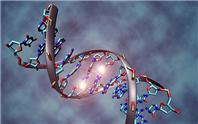This study is about 6 months old, but I'm posting this very good article about epigenetic changes discovered in CLL...that drives this cancer.
Originally researchers thought there were 1000 changes, but this study has found a million changes...
The complexity and number of DNA changes in CLL is staggering... what was believed to be 'junk' DNA has found out to be encoded.

